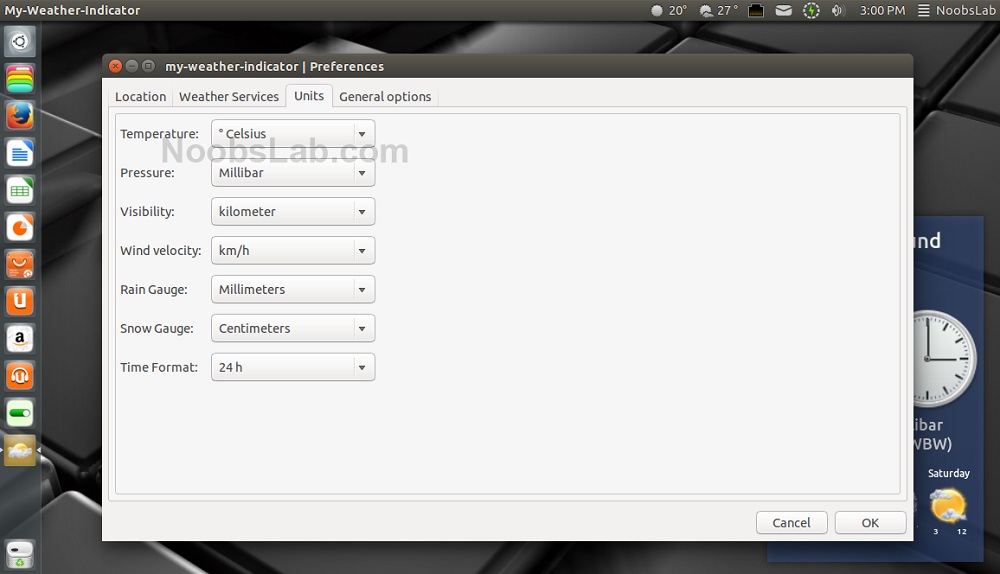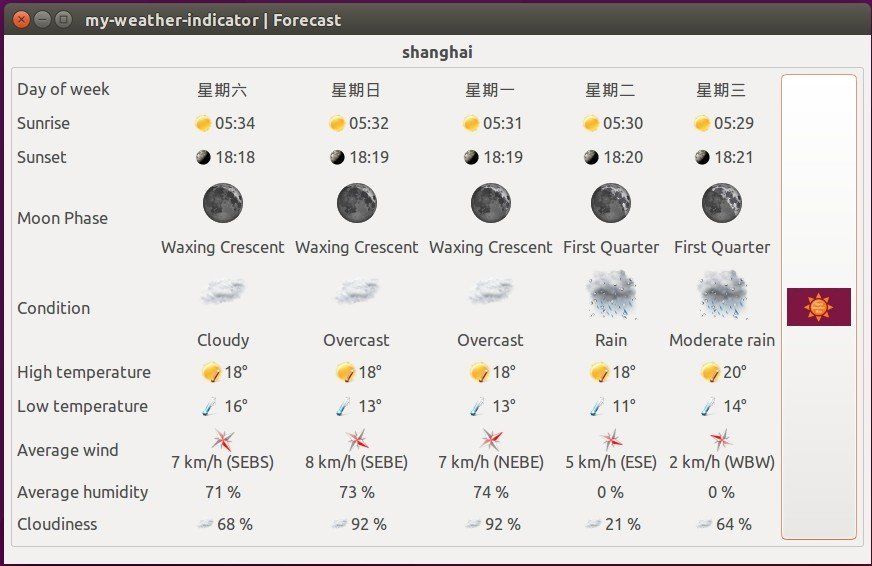

- #MY WEATHER INDICATOR WEATHER UNDERGROUND HOW TO#
- #MY WEATHER INDICATOR WEATHER UNDERGROUND INSTALL#
- #MY WEATHER INDICATOR WEATHER UNDERGROUND MANUAL#
- #MY WEATHER INDICATOR WEATHER UNDERGROUND SOFTWARE#
- #MY WEATHER INDICATOR WEATHER UNDERGROUND CODE#
#MY WEATHER INDICATOR WEATHER UNDERGROUND INSTALL#
In order to add weather in Ubuntu 20.04, you will need to first install the GNOME Shell integration extension and the GWeather applet.
#MY WEATHER INDICATOR WEATHER UNDERGROUND SOFTWARE#
To install, choose ‘Weather.’ In the Ubuntu Software Centre, you can also download and install a weather app for your desktop.
#MY WEATHER INDICATOR WEATHER UNDERGROUND HOW TO#
How To Install A Weather Applet On Ubuntuīy right-clicking on an empty part of the desktop panel and selecting ‘Add applets to the panel…,’ Ubuntu users can install the weather app. The top panel displays the current temperature as well as a few information, but this screen does not contain a lot of information.
#MY WEATHER INDICATOR WEATHER UNDERGROUND MANUAL#
Automatic location detection can be enabled or manual coordinates can be entered. OpenWeatherMap, Yahoo, Weather Underground, or World Weather Online are some of the websites where weather information can be found. To run the program, you must install a PPA. Furthermore, to see a forecast, click on the Forecast button. The new indicator can be found by searching for it in the Dash. You don’t have to be an expert in Ubuntu to install My Weather Indicator, as third-party PPAs can be found here. Select the weather widget you want to add and click “Add”. Once you have installed a weather widget, you can add it to your Ubuntu Desktop by right-clicking on the Desktop and selecting “Add to Desktop”.

To install a weather widget, open the Ubuntu Software Center and search for the widget you want to install. There are a few different weather widgets available for Ubuntu, such as My-Weather-Indicator and Conky-Weather. Another way to add weather to your Ubuntu Desktop is to use a weather widget. Click on the “Weather” icon to open the applet. To do this, open the Dash and search for “Weather”. One way is to use the default Ubuntu weather applet. There are a few ways to add weather to your Ubuntu Desktop. The weather indicator will now show the conditions for the locations that you specified. Once you have added all of the locations that you want, click on the “OK” button to save your changes. This will add a new field where you can enter another location. To do this, click on the “+” button next to the “Location” field. You can also choose to have the weather indicator show the conditions for multiple locations. In the “Location” field, enter the name of the city or town that you want to see the weather for. This will open the weather settings window. To customize the weather indicator, open the Mint Menu and click on the “Weather” icon.

However, you can customize the weather indicator to show the conditions for any location that you want. By default, the weather indicator shows the conditions for your location based on your IP address. You can click on the icon to open a detailed forecast. The weather indicator is a small icon that appears in the taskbar and shows the current weather conditions for your location. One of the features of the Linux Mint user interface is the weather indicator. One of the things that makes Linux Mint so popular is its user-friendly interface. Linux Mint is a popular operating system that is based on the Ubuntu distribution. com/my- weather- indicator/ share/my- weather- indicator/ wundergroundapi. py", line 225, in get_weatherįile "/opt/extras. com/my- weather- indicator/ share/my- weather- indicator/ myweatherindica tor.py", line 682, in update_menu com/my- weather- indicator/ share/my- weather- indicator/ myweatherindica tor.py", line 158, in update_weatherįile "/opt/extras. com/my- weather- indicator/ share/my- weather- indicator/ myweatherindica tor.py", line 369, in load_preferencesįile "/opt/extras. com/my- weather- indicator/ share/my- weather- indicator/ myweatherindica tor.py", line 143, in _init_įile "/opt/extras. jsonįile "./my-weather- indicator", line 69, in įile "/opt/extras. Underground Weather Service url: api.wundergroun d.com/api/ xxxxxxxxxxxxxxx x/conditions/ forecast/ lang:EN/ pws:1/q/ 49.2067004, -122.9108977. ****** Requesting timezone identificacion My-Weather- Indicator version: 0.8.1-0extras16. Version: #72-Ubuntu SMP Thu Nov 24 18:29: I'm attaching the response I receive when using my API key.
#MY WEATHER INDICATOR WEATHER UNDERGROUND CODE#
I have replaced my API key on the code for privacy, but trust me that the right key is shown on the output. After running from terminal this is the output and it seems weather underground is to blame. It was working without problems until I switched to weather underground.


 0 kommentar(er)
0 kommentar(er)
